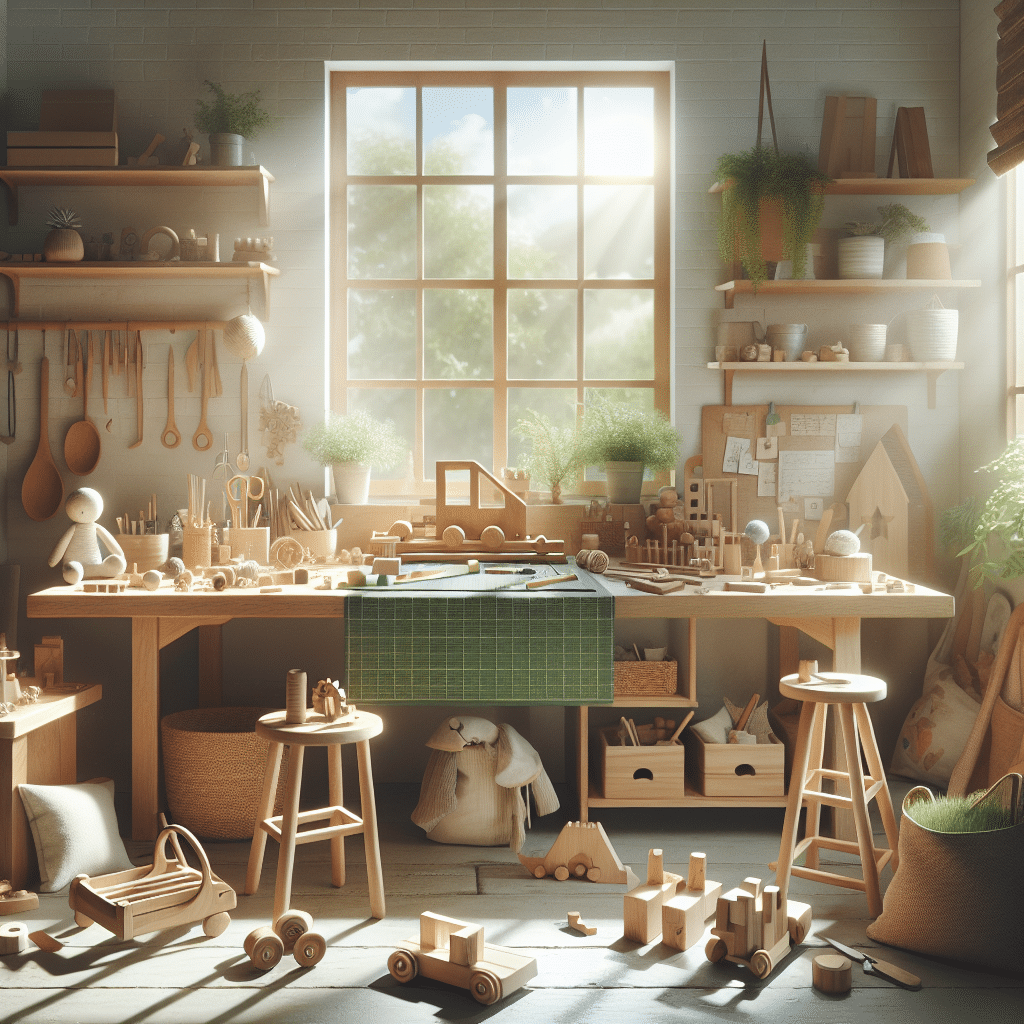How to Create an Eco-Friendly Toy Workshop
In today’s world, sustainability is more important than ever, and creating an eco-friendly toy workshop is a fantastic way to contribute positively to the environment while fostering creativity and joy. Whether you’re a seasoned toymaker or just starting, this guide will help you establish a workshop that’s both fun and eco-conscious. 🌱
Table of Contents
1. Introduction
2. Choose Sustainable Materials
3. Efficient Energy Use
4. Waste Management Strategies
5. Eco-Friendly Finishes
6. Conclusion
7. FAQs
Introduction
Creating toys might seem like a small-scale endeavor, but every little bit helps when it comes to protecting our planet. By establishing an eco-friendly toy workshop, you can ensure that the fun and joy of playtime don’t come at the expense of the environment. This guide will walk you through the essential steps to make your toy workshop sustainable, from choosing the right materials to managing waste effectively.
Choose Sustainable Materials
The first step in creating an eco-friendly toy workshop is selecting materials that are gentle on the environment. Look for materials that are renewable, non-toxic, and biodegradable. Here are some options to consider:
Wood: Opt for certified sustainable wood like FSC-certified timber, which ensures that the wood is sourced responsibly.
Organic Cotton: For soft toys, organic cotton is a great choice as it’s grown without harmful pesticides.
Bamboo: This fast-growing plant is a fantastic alternative to plastic, offering strength and durability.
By choosing these materials, you not only create safe toys for children but also contribute to a greener planet. 🌍
Efficient Energy Use
Another crucial aspect of an eco-friendly workshop is energy efficiency. Here are some tips to reduce your energy consumption:
Natural Lighting: Maximize the use of natural light to reduce the need for artificial lighting. Large windows and skylights can make a significant difference.
Energy-Efficient Appliances: Invest in appliances that have high energy-efficiency ratings to minimize electricity usage.
Solar Power: If possible, consider installing solar panels to power your workshop with renewable energy.
By implementing these practices, you can significantly reduce your workshop’s carbon footprint. 💡
Waste Management Strategies
Managing waste effectively is essential in maintaining an eco-friendly workshop. Here are some strategies you can adopt:
Reduce: Minimize waste by designing toys that use fewer materials and have less packaging.
Reuse: Repurpose scraps and offcuts for smaller projects or donate them to schools and community centers.
Recycle: Set up a recycling system for materials like paper, plastic, and metal that can’t be reused.
By focusing on these strategies, you’ll ensure that your workshop remains as waste-free as possible. ♻️
Eco-Friendly Finishes
When it comes to finishing your toys, it’s important to choose products that are safe for both children and the environment. Consider the following options:
Natural Dyes: Use plant-based dyes to color your toys without the use of harmful chemicals.
Non-Toxic Sealants: Look for water-based sealants that are free from volatile organic compounds (VOCs).
These eco-friendly finishes ensure that your toys are not only beautiful but also safe for little hands and the planet. 🖌️
Conclusion
Creating an eco-friendly toy workshop is a rewarding endeavor that benefits both the environment and the children who enjoy your creations. By carefully selecting sustainable materials, using energy efficiently, managing waste, and choosing safe finishes, you can ensure that your workshop is a model of sustainability. Remember, every step you take towards an eco-friendly practice is a step towards a healthier planet.
FAQs
Q: Why is using sustainable materials important in toy making?
A: Sustainable materials reduce environmental impact and ensure that toys are safe for children and the planet.
Q: How can I ensure my workshop is energy-efficient?
A: Use natural lighting, invest in energy-efficient appliances, and consider renewable energy sources like solar power.
Q: What are some eco-friendly finishes for toys?
A: Natural dyes and non-toxic, water-based sealants are excellent choices for eco-friendly toy finishes.
Remember, transforming your toy workshop into an eco-friendly haven is a journey, and every small change contributes to a larger impact. Happy crafting! 🎨🌿
